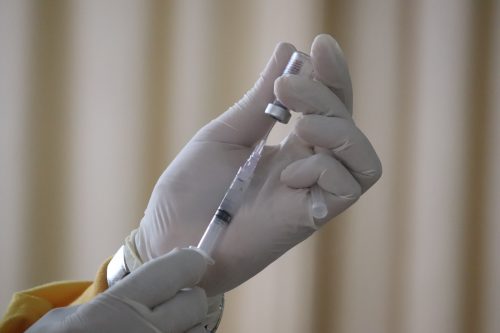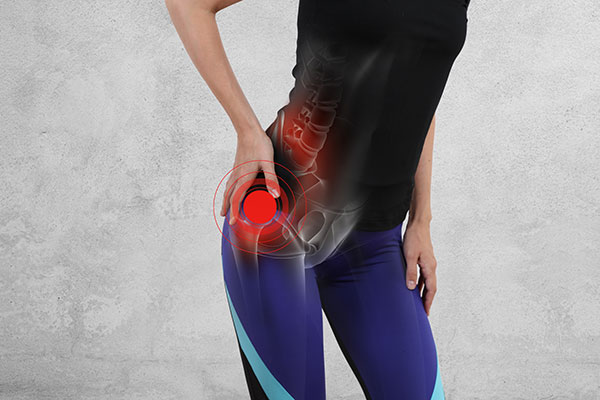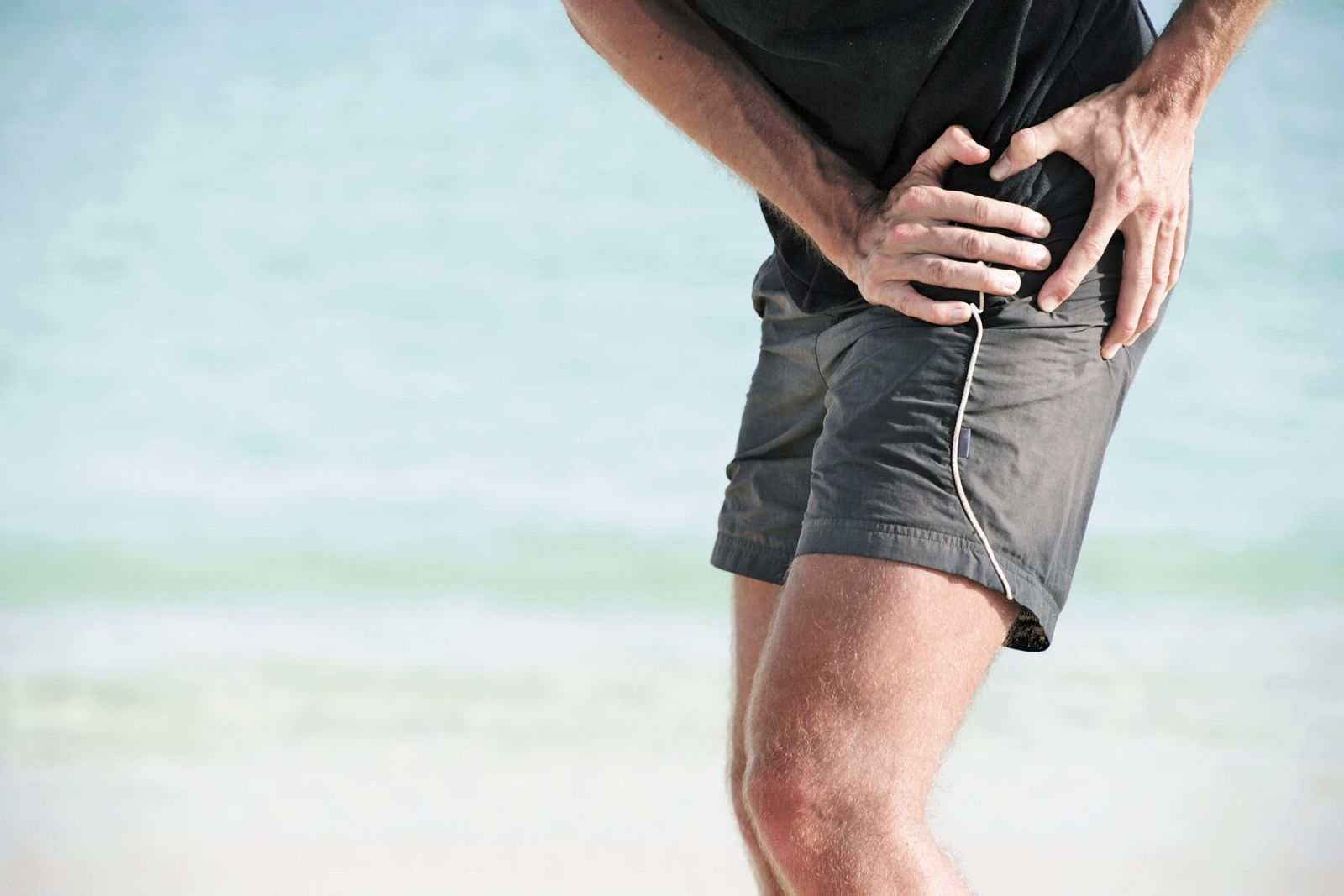La hip bursitis is a condition that occurs when the bursa, a fluid-filled sac that acts as a cushion between muscle and bone, becomes inflamed.
If you suffer from a hip bursitis, you may consider an infiltration procedure as a treatment option.
This is a common procedure that can help reduce inflammation and pain in the hip area. In this article, we'll take a closer look at what an infiltration procedure is, along with its benefits and risks.
hip anatomy
The hip is a ball joint that connects the leg to the torso of the body. It is one of the largest and strongest joints in the human body. The hip joint forms where the rounded head of the femur (femur) meets the acetabulum, a cavity in the pelvic bone.
A layer of articular cartilage lines the surface of the femur head and acetabulum, allowing the bones to glide smoothly over each other. The joint is held together by a strong fibrous capsule, which is reinforced by ligaments.
The capsule and the ligaments provide stability to the joint and prevent dislocations. Muscles and tendons attach to the bones around the hip joint to move the lower limb. The large muscles of the buttocks and thighs are responsible for the movement of the hip joint.
The hip joint is a weight-bearing joint, that is, it supports the weight of the body.
What is hip bursitis?
La hip bursitis is a condition that occurs when the fluid-filled bursae that protect the bones, tendons and muscles near the hip joint become inflamed.
La hip bursitis often causes pain on the outside of the hip or in the buttocks. The hip bursitis is also known as trochanteric bursitis.
What causes hip bursitis?
La hip bursitis usually occurs when bone rubs against bone or tendons rub against bone, which irritates the bursa and causes inflammation. This inflammation makes hip movements painful.
Activities that put extra pressure on the bursae around the hip joint, such as running or lifting the leg sideways, can make symptoms of hip joint worse. hip bursitis.
Poor sports form, weak muscles around the hip, and arthritis can also contribute to a hip bursitis.
What are the symptoms of hip bursitis?
Symptoms of a hip bursitis may include.
- Pain on the outside of the hip or in the buttocks.
- Tenderness to pressure on the outside of the hip.
- Stiffness when walking, climbing stairs, or getting up from a chair.
- Weak muscles in the leg.
- Reduced range of motion at the hip.
If you have any of these symptoms, you should see your doctor. Your doctor will likely ask you about your medical history and perform a physical exam.
They may also order X-rays, MRIs, or other imaging tests to rule out other conditions that may be causing your symptoms.
What are the treatments for hip bursitis?
Treatment of hip bursitis usually begins with non-drug measures. If these treatments do not relieve your symptoms, your doctor may prescribe medication or other treatments.
Non-drug measures
If you have a hip bursitis, it is important to take steps to reduce inflammation and pain. These measures include:
- Rest : You should reduce your activity to allow your hip joint to rest. Avoid activities that put extra pressure on the joint, such as running or lifting your leg to the side.
- Ice cream : Apply ice to the painful joint for 15 to 20 minutes, 3 to 4 times a day. It can help reduce inflammation and pain.
- Elastic bandage: An elastic bandage can be used to support the hip joint and reduce pain.
- Kinesitherapy (physiotherapy): Physical therapy can help reduce pain and inflammation, improve mobility in the hip joint, and strengthen the muscles around the joint.
pharmaceuticals
If non-drug measures do not relieve your symptoms, your doctor may prescribe nonsteroidal anti-inflammatory drugs (NSAIDs), such as ibuprofen or naproxen. NSAIDs can help reduce inflammation and pain.
NSAIDs can cause side effects, including upset stomach, constipation, or diarrhea. People with gastric or duodenal ulcers, high blood pressure, or other cardiovascular conditions may need to avoid NSAIDs.
Corticosteroids, such as prednisone, can be taken by mouth or injected directly into the hip joint to reduce inflammation and pain. Corticosteroids can cause side effects, including trouble sleeping, anxiety, or depression.
Infiltration for hip bursitis
Infiltration is a procedure that involves injecting medication directly into the hip joint. This medication may be a nonsteroidal anti-inflammatory drug or a corticosteroid. The injection can help reduce inflammation and pain.
Indications
La hip bursitis is a common condition that occurs when the bursa at the base of the femoral skull becomes inflamed. When the patient does not respond to conservative treatments (mentioned above), and the pain limits the quality of life, then we consider a infiltration.
Procedure
During the infiltration of corticosteroids for hip bursitis, a needle is inserted into the hip joint and a corticosteroid is injected directly into the bursa. This procedure is usually performed on an outpatient basis and only takes a few minutes to perform.
Contraindications and risks
Contraindications and risks of corticosteroid infiltration for hip bursitis are rare, but they may include an allergic reaction to the medicine injected, joint pain, or excessive bleeding.
If you experience symptoms such as difficulty breathing, nausea, or vomiting, seek medical attention immediately.
En conclusion
Infiltration is an effective procedure for relieving pain and inflammation associated with hip bursitis. However, like any medical procedure, it can have risks and side effects. Consult your doctor to see if this procedure is right for you.




